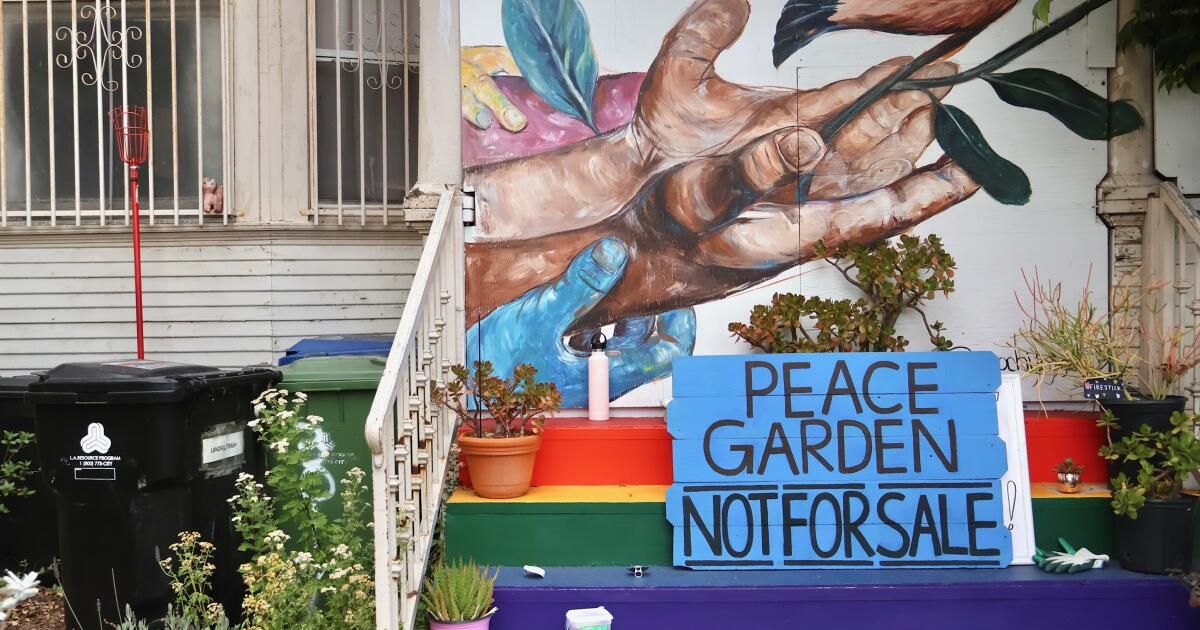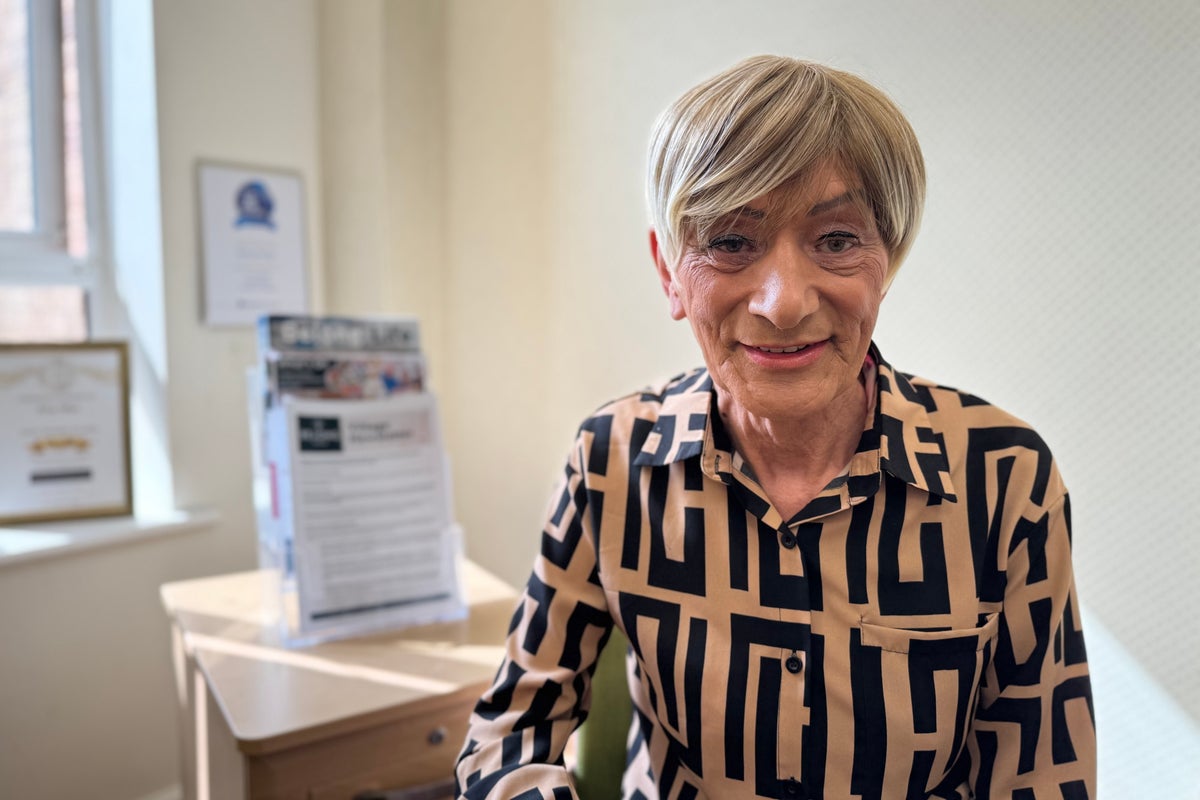What was intended to be an event of concentration for the Paz Garden of the USC became a quiet day when student employees and the surrounding community accepted that the beloved green space would be forced to close.
Founded in 2022 by Camille Dieterle, professor of the Division of Occupational Sciences and Occupational Therapy of the USC Chan, the USC Peace Garden is in 3015 Santhine Place, a lot of approximately 10,000 square feet with an abandoned house and shed. During the last years, the front and the backyard of the lot have become a flourishing ecosystem of native plants, high fruit trees and garden beds full of vegetables, where student employees offer gardening workshops and other activities.
But on May 28, Dieterle told the three garden employees that the USC real estate and asset management team had made plans to relocate the garden of La Paz and sell their current land, and that they had until June 30 to stop operating.
-
Share by
“The University has made it clear that it is committed to relocating in a reflexively and inclusive way,” read a letter sent to Garden employees on June 6, directed by Grace Baranek, associate dean and president of USC Chan, and Mick Dalrymple, Sustainability Director of the USC. “Mondays [June 9]The University will evaluate a series of possible locations to determine which would be feasible as a new garden. “
Garden employees announced the news in a Instagram publicationsaying that the earth was scheduled to be sold and that they would be “working tirelessly to save the peace garden just where it is.”
On June 7, about 15 students and community members met at Peace Garden to listen to updates and celebrate the space, which obtains a few hundred visitors every academic year. He encouraged attendees to reap as many plants as possible and spent the afternoon placing flowers in pots, picking up lemon grass for tea and even uprooting a high poppy tree in California so that a neighbor took home.
“The fact that the Peace Garden is just a short walk from the Campus is what allows it to be so accessible to people and that classes occur here,” said Diāna Lūcifera, an Undergraduate and Garden Employee of the USC. “The original values of the Garden of Peace were to defend environmental justice, defend the community, prioritize our residents of the South Center.”
A truck from the USC Public Security Department arrived outside the Peace Garden shortly before the event began on Saturday at noon, while another truck arrived around 12:15 pm that walked to and from the garden they reported that the public security officers asked them how long the event would last. According to Lūcifera, this was the first time that public security appeared in an event by Peace Garden.
Lūcifera, along with the graduated students Sophia Leon and Diana Amaya-Chicas, are the only employees of the Garden of Peace. The three renounced their roles in the event on Saturday.
“That is what makes it even more painful,” Leon told the little crowd. “Not only the threat [of] Taking this garden, but they have made us feel that our voices do not matter, but they do it. “
USC did not share the details of who made the decision, the reasoning behind her or the buyer's name with the employees and supervisor of the Peace Garden, according to Lūcifera, who also said that a university administrator did not appear at his meeting scheduled last week. A USC spokesman told The Times that the lot where the garden is in areas as a residential, and that it will remain as such after being sold.
“It was something we did not expect to do immediately, but we knew there were possibilities,” said Julie McLaughlin Gray, an associated president of USC Chan, in an interview. “We are excited to be able to work with the university in a new location.”
McLaughlin Gray also said that the university will prioritize the choice of an accessible location for members of the USC community and that they are not USC, and that students expect students to continue working in the garden.
“It is not practical to move all those trees to another location, if not impossible,” said Lūcifera.
The Garden of Peace is currently just to the northeast of the main campus of the USC, surrounded by apartments for students and low -income homes. According to the United States Agriculture Department Food research atlasThe garden limits with a low -income neighborhood where a “significant number” of residents lives more than 0.5 miles from the nearest supermarket.
One of these residents, Lucy Sánchez-Strella, has not only found a cozy community in the Peace Garden, but also uses it as a regular source of fresh products.
“I come on Fridays, Saturdays and Sundays, three times a week,” said Sánchez-Strella, who also offers as a volunteer in the garden. “It is very sad for me that this garden will close because I have found peace, tranquility, I have made new friends, new classmates.”
Sánchez-Estella and her husband have been common in the garden of La Paz during the last year. He likes to use garden herbs to make tea, which he shares with the students.
Student employees of the Garden de la Paz “have introduced [to] How to plant, how to reap what I have put on earth, “said Sánchez-Strella.” I have connected a lot in this garden. They are like a family for me. “
The garden has approximately a dozen volunteers and is also home to several cats that community members plan to help to be adopted. One, SunshineIt has become the de facto pet in the garden.
The loss of the Paz Garden of the USC is not an isolated incident: the green spaces in Los Angeles have fought to survive in the middle Gentrification and Water supply cuts In drought times. Last November, the County of the launched its first Food Equity Office, which has appointed Community Gardens as an area that aims to support.
“There is a kind of growing recognition of the importance of community gardens from the point of view of resilience,” said Omar Brownson, executive director of the Los Angeles Community Garden Council. “It is possible that they are not always large on a scale, but they really create these breaks and important spaces for people and nature and health to join.”
USC has seen a series of sustainability initiatives during the six -year period of President Carol Folt, who announced in November that would retire from his position on July 1. As employees of the Peace Garden, Lūcifera, Amaya-Chicas and Leon were part of the Sustainability Internship Program of the President of the USC. Now, some students question University's commitment to sustainability.
“I learned in my environmental classes how important are the green spaces, not only for mental health, but only for the general well -being of the city and for climate change,” said the graduate student of the USC, Val Katritch, who lives in an apartment near the garden of La Paz. “The fact that USC has made this decision has made me completely distrust the sustainability programs.”
Some students are still committed to maintaining the garden of peace in their existing location. During Saturday's event, the recent graduate of the USC Sophia Hammerle created a group for community members to keep in touch. While students have not made efforts to buy the land themselves, they have begun to collect community testimonies and information surrounding the sale of the land in the hope of keeping the garden in its current location.
“Any type of organization that happens will be in the name of not falling without a fight,” Hammerle said.












